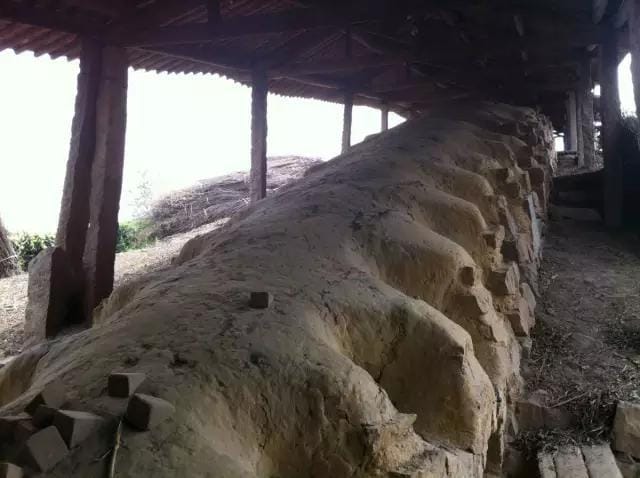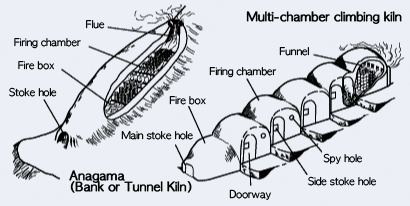Dragon Kilns (龙窑)
Introduction
Wood fired Dragon Kilns[1] (龙窑, long yao) are large[2] wood-burning single or multi-chamber[3] climbing kilns. Dragon kilns have been present in Yixing from the Northern Song dynasty (960 – 1127 CE).

Dragon kilns are both the earliest and longest used kiln-type for firing zisha wares, with a history of over 300 years in Yixing[4]. The primary dragon-kiln kiln-sites of Dingshu town were Dingshan (丁山), Qinglong Shan (青龙山), Chuanbu (川埠), Baoshan Si (宝山寺), Shushan (蜀山), Tangdu (汤渡), Xiwa Yao (西瓦窑), Qianluo (潜洛), Shangyuan (上袁). Many of these kiln-sites contained both a larger dragon kiln used for firing zisha wares, termed the “big kiln” (大窑) and a smaller dragon kiln used for daily use wares and rougher stoneware termed the “small kiln” (小窑).

Design and Construction
The construction of dragon kilns evolved over time, eventually landing on their mature design around the early-to-mid Ming dynasty. The structure of the dragon kiln can be divided into 3 sections: the kiln-head (窑头, yao tou), the kiln-body (窑身, yao shen), and the kiln-tail (窑尾, yao wei). The foot of the hill will become the kiln head (also called kiln mouth), the kiln body is built over the trench, and the kiln-tail and chimney built at the top of the slope[5].
This page is for paying subscribers only
Subscribe NowAlready have an account? Log in